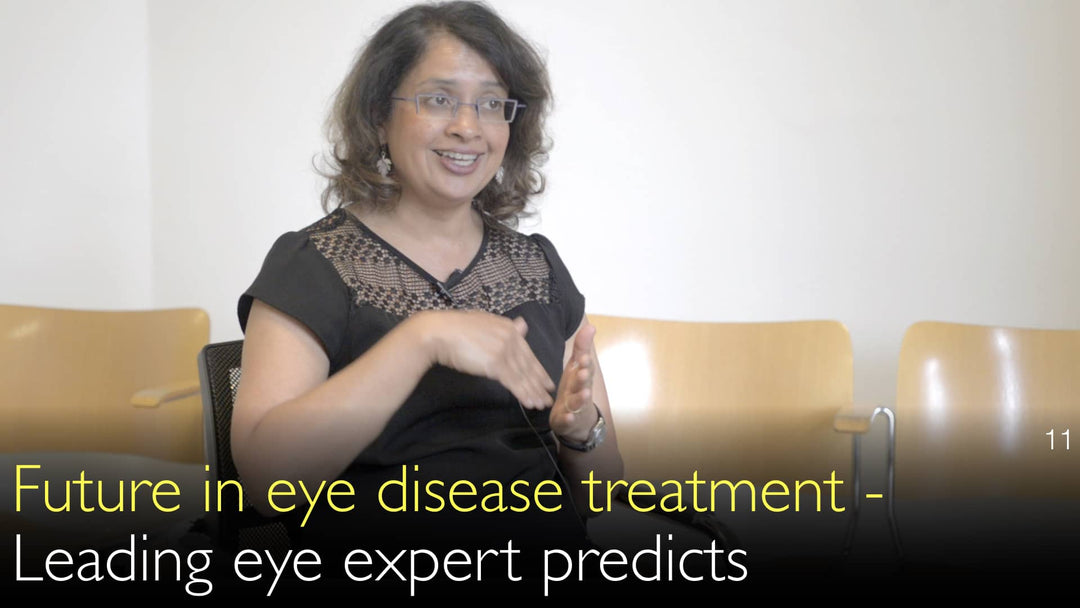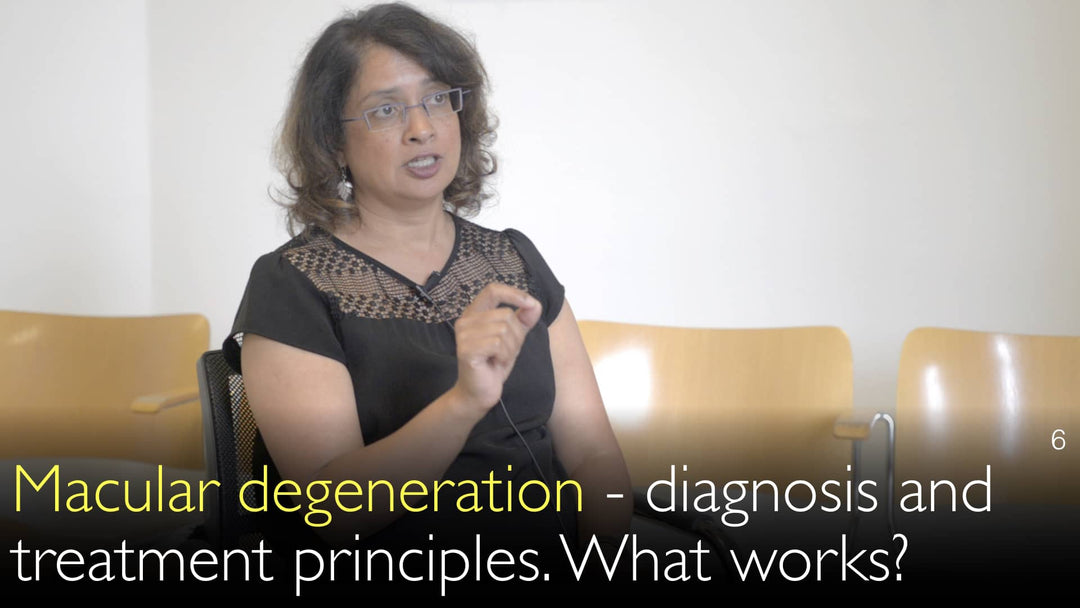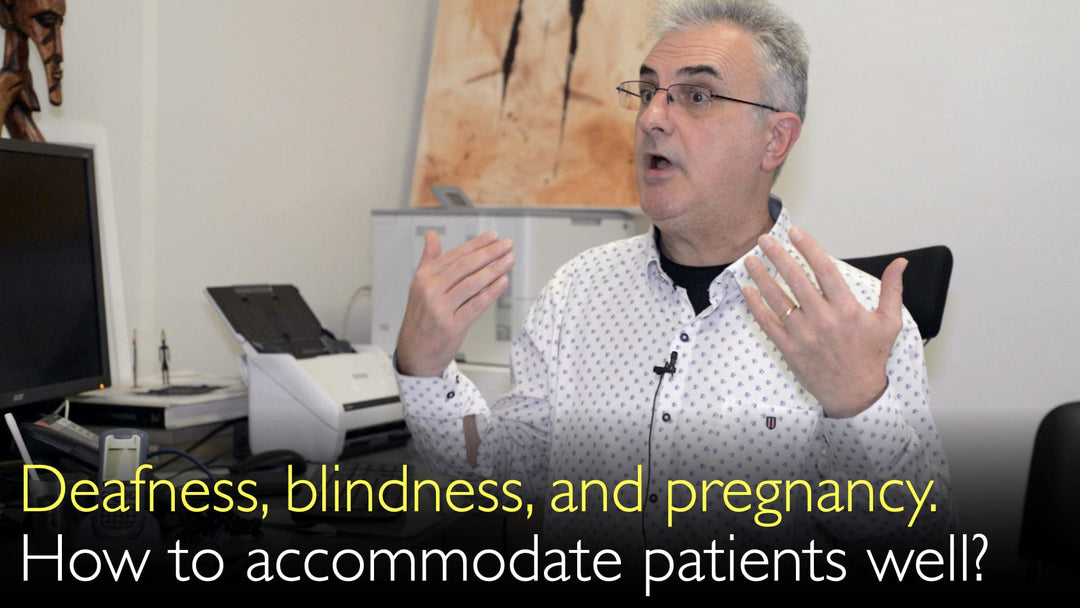Leading expert in eye disease and neurodegeneration, Dr. Francesca Cordeiro, MD, explains how recent technological and pharmaceutical breakthroughs are revolutionizing ophthalmology. She details the impact of advanced imaging like optical coherence tomography (OCT) and adaptive optics for cellular-level diagnosis, alongside novel drug delivery systems including anti-VEGF eye drops and sustained-release implants that promise more effective and convenient treatments for patients.
Future of Ophthalmology: Breakthroughs in Eye Disease Diagnosis and Treatment
Jump To Section
- Imaging Revolution in Eye Disease Diagnosis
- Cellular Level Viewing with Adaptive Optics
- Anti-VEGF Medication Innovations
- Sustained Drug Delivery Systems
- Rapid Knowledge Advancement in Ophthalmology
- Future Potential for Patient Care
Imaging Revolution in Eye Disease Diagnosis
Ophthalmology is experiencing a diagnostic transformation driven by imaging technology. Dr. Francesca Cordeiro, MD, highlights optical coherence tomography (OCT) as a pivotal achievement. She notes that the technological change in OCT over just five years has been monumental.
This non-invasive imaging test allows clinicians to see detailed cross-sections of the retina. These are views that were previously impossible to obtain. The ability to visualize the eye's structures with such clarity has dramatically improved early detection and monitoring of conditions like glaucoma and macular degeneration.
Cellular Level Viewing with Adaptive Optics
The future of eye disease diagnosis extends to viewing individual cells. Dr. Francesca Cordeiro, MD, points to adaptive optics as a key breakthrough. This technology compens for distortions in the eye to provide extremely high-resolution images.
This capability is particularly transformative for researching and treating genetic retinal dystrophies. By observing the retina at a cellular level, researchers can better understand disease mechanisms. Clinicians can also monitor treatment responses with unprecedented precision.
Anti-VEGF Medication Innovations
Treatment delivery is evolving beyond traditional methods. Dr. Francesca Cordeiro, MD, discusses her team's development of an eye drop version of anti-VEGF therapy. Anti-VEGF injections are a standard treatment for wet age-related macular degeneration and other retinal diseases.
An effective eye drop formulation would represent a significant leap in patient convenience and compliance. This innovation could reduce the need for frequent intravitreal injections. It makes critical sight-saving treatment more accessible and less invasive for countless patients.
Sustained Drug Delivery Systems
New methods are solving the challenge of daily patient-administered eye drops. Dr. Cordeiro describes sustained-release systems designed to provide long-term medication. One method involves implanting biodegradable pellets into the eye that release treatment over time.
Another approach uses a ribbon-like device placed around the eye for slow medication release. These technologies ensure a consistent therapeutic dose is delivered. They eliminate the variability and forgetfulness associated with daily self-administration, improving treatment outcomes.
Rapid Knowledge Advancement in Ophthalmology
The field's knowledge base is expanding at an unprecedented rate. Dr. Francesca Cordeiro, MD, emphasizes the huge advancement in understanding compared to a decade ago. This progress is fueled by the convergence of better imaging, new research into neurodegeneration, and cross-disciplinary applications.
Discoveries made in other medical fields are finding critical applications in eye care. This rapid accumulation of knowledge directly translates to more effective clinical strategies. It allows for a more personalized and proactive approach to preventing vision loss.
Future Potential for Patient Care
The collective innovations promise a profoundly positive impact on patient care. Dr. Cordeiro describes ophthalmology as a "very rosy area" with immense potential. The ability to diagnose earlier and with greater accuracy means interventions can begin before significant vision loss occurs.
More convenient and effective treatments will improve quality of life and adherence. Dr. Anton Titov, MD, concludes that it is a very exciting time for the field. The research led by experts like Dr. Francesca Cordeiro, MD, is paving the way for a future where blinding diseases are more effectively managed and prevented.
Full Transcript
Dr. Anton Titov, MD: Advances in eye disease early diagnosis and treatment. New tests lead to rapid progress. Optical coherence tomography [OCT], Detection of Apoptosing Retinal Cells [DARC], anti-VEGF therapies. Better understanding of neurodegeneration processes in the brain and eyes. Leading eye disease and neurodegeneration expert, Prof. Francesca Cordeiro.
Dr. Anton Titov, MD: Ophthalmology is a very fast moving field of medicine. Many new research breakthroughs happen in the area of neurodegenerative problems that are connected to ophthalmology. A lot of research is going on, new treatments are coming along.
Dr. Anton Titov, MD: From your perspective, what does the future hold for ophthalmology?
Dr. Francesca Cordeiro, MD: I think ophthalmology is a very rosy area. Certainly there's so much potential as our ability to visualize things improves. One of the big achievements that has improved us diagnostically is optical coherence tomography [OCT]. That change in the technology just over five years has been huge.
You can see things now with an optical coherence tomography OCT that you weren't able to do before. There are eye treatment improvements, such as adaptive optics. This allows you to even look at very high resolution into the eye at a cellular level. This is extremely useful if you're looking at new treatments for genetic retinal dystrophies.
Dr. Francesca Cordeiro, MD: Other breakthroughs that are coming through are in medication development. Our team have developed an eye drop version of the Anti-VEGF treatments. There are methods to be less dependent on relying on your patient to do eye drops everyday.
There are some sustained release methods of putting pellets into the eye. They release the medication over time. There are methods where you have ribbon type of thing around the eye. This is a method to slow release the medication.
Dr. Anton Titov, MD: There are so many eye therapy achievements that are coming through. New treatments that have been discovered in other areas. They have applications in ophthalmology.
Dr. Francesca Cordeiro, MD: So, it's a very exciting time to be in ophthalmology. If you look at the field of ophthalmology, what we know now, even compared to 10 years ago, it's huge in terms of our knowledge advancement.
Dr. Anton Titov, MD: Professor Cordeiro, thank you very much for this very interesting conversation! We are looking forward to see the results of your research!
Dr. Francesca Cordeiro, MD: Thank you very much!







